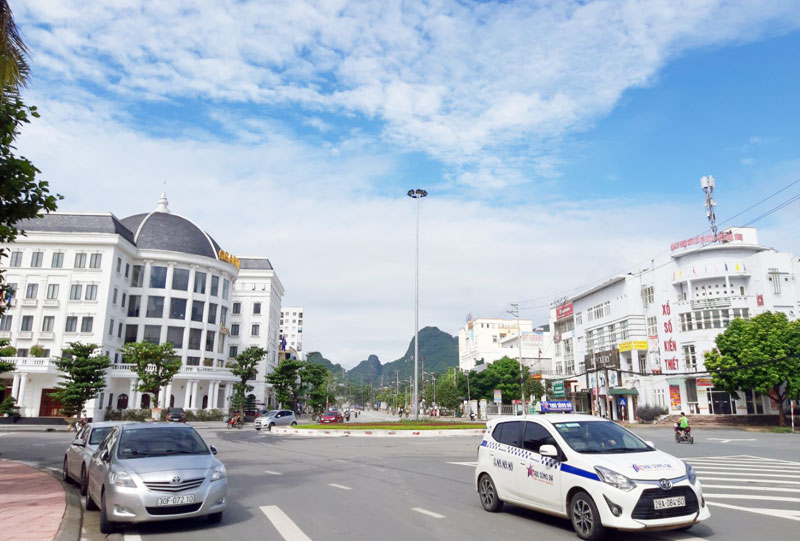


 Hoa
Binh has effectively mobilised investment from different sources for
socio-economic infrastructure development. Photo: The new face of the trade
centre on the Da River’s left bank (Hoa Binh city)
Hoa
Binh has effectively mobilised investment from different sources for
socio-economic infrastructure development. Photo: The new face of the trade
centre on the Da River’s left bank (Hoa Binh city)
In the field of transport infrastructure, many projects have been put into operation, creating breakthrough changes in the transport networks, stimulating investment attraction as well as socio-economic growth, with typical examples being the Hoa Lac-Hoa Binh road and Hoa Binh 3 Bridge.
A number of major projects are underway, including the Lac Son-Tan Lac inter-district road, Road 435, the road connecting the National Highway 6 and Chi Lang road in Hoa Binh city, Hoa Binh 2 Bridge, and the road linking the Ho Chi Minh Highway with the National Highway 12B to National Highway 1.
In addition, inter-district roads and rural road networks as well as river ports have also received investment, thus better meeting the socio-economic development demands and improving locals’ living conditions.
Meanwhile, hundreds of irrigation works have been repaired and upgraded, with the concretisation ratio reaching 48.9 percent, providing water to 53,000 hectares of food crop each year, or 80 percent of the total farming area.
The urban infrastructure system has been improved in line with urban planning. The province so far has 11 urban areas, with the urbanization rate of 28.96 percent. Hoa Binh city is striving to become a Class-2 urban area, while the expanded Luong Son town has been recognised by the Ministry of Construction as a Class-4 urban area.
Meanwhile, the province has completed the design and announcement of detailed planning for eight industrial parks (IPs) and 16 industrial clusters with total area of 1,941 hectares. Since 2017, the province has assigned investors to develop the infrastructure of one IP and five industrial clusters. The technical infrastructure systems of Luong Son IP and the IP on the Da River’s left bank have been completed for attracting investment, creating sustainable economic transformation.
The power, trade, information technology infrastructure has been developed, better meeting the demand for production and providing high quality services to locals. The province now has four supermarkets, two trade centres and 93 markets. The modern information technology system with high capacity and speed has covered all communes, wards and towns, along with the optical cable system reaching all 10 districts and city, satisfying the demand of agencies, organisations and locals.
At the same time, the education, health, socio-culture infrastructure system has also been developed. A new Department for Internal Medicine and Anti-Infection is being built at the provincial General Hospital, while a project to treat hospital wastewater is underway at the Hospital of Traditional Medicine. District-level hospitals have also received modern equipment.
In the coming years, the province will focus investment resources on completing a comprehensive and modern socio-economic infrastructure system, with priority given to land transport infrastructure, environmental protection and climate change response./.